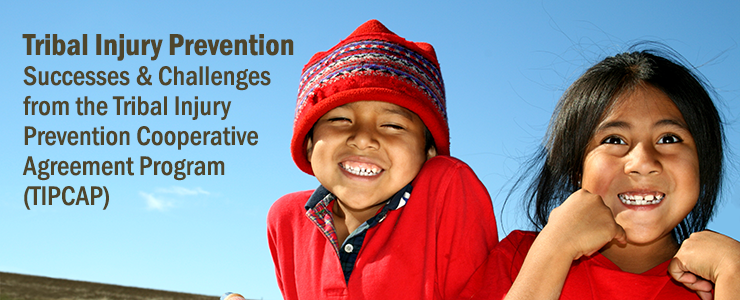
While injuries were the leading cause of death among Americans ages 1 – 44 years in 2014, the burden was even higher among American Indian/Alaskan Native (AI/AN) people. (1) The Indian Health Service (IHS) reports that AI/AN death rates for unintentional injuries (from 2007-2009) were 141 percent greater than the 2008 U.S. all races rate. (2) AI/AN children and youth experience the highest rates of injury mortality and morbidity, although this disparity varies by IHS Regional Area and by cause of injury. (3) Compared with black and white children and youth age 19 and younger, for example, from 2012-2014 AI/AN children and youth had the highest injury-related death rates for suicide, pedestrian injuries, and motor vehicle crashes. (4)
This webinar focused on on the implementation and evaluation of the Indian Health Service (IHS) Tribal Injury Prevention Cooperative Agreement Program (TIPCAP), which aimed to enhance the capacity of Tribes to build sustainable injury prevention (IP) programs during 2011 – 2015. To maximize the impact of these programs, Econometrica, Inc., supported the 33 grantees in 9 IHS Areas to operate autonomously and with the flexibility necessary to ensure that program activities were tailored to the unique needs and circumstances of each Tribal community.
Kai Baker Stringfield and Monique Sheppard of Econometrica, Inc. shared their efforts in planning, implementing and evaluating TIPCAP. CAPT Nancy Bill, of the Indian Health Service, discussed the importance of preventing childhood injuries in Tribal communities, as well as effective strategies for collaborating with Tribal partners.
- Centers for Disease Control and Prevention, National Center for Injury Prevention and Control. Web-based injury statistics query and reporting system (WISQARS). Leading Causes of Death Reports, 2014, for National, Regional, and States. Available at: http://www.cdc.gov/injury/wisqars/index.html . (Accessed 06.07.16.).
- Indian Health Service, 2015. Trends in Indian Health 2014 Edition. Indian Health Service, U.S. Department of Health and Human Services, Rockville, MD. Retrieved from https://www.ihs.gov/dps/index.cfm/publications/trends2014/ (Accessed 06.06.16.).
- Wallace LJD, Patel R, Dellinger A. Injury mortality among American Indian and Alaska Native Children and Youth — United States, 1989–1998. MMWR 2003;52(30):697–701.
- Centers for Disease Control and Prevention, National Center for Injury Prevention and Control. Web-based injury statistics query and reporting system (WISQARS). Fatal Injury Reports, 2012-2014, for National, Regional, and States. Available at: http://www.cdc.gov/injury/wisqars/index.html . (Accessed 06.07.16.).